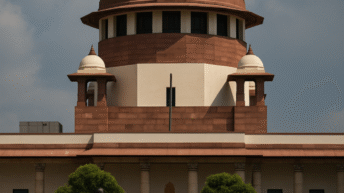
On July 25th, External Affairs Minister (EAM) S. Jaishankar will travel to Laos to participate in the annual Foreign Ministers’ Meetings under the ASEAN-India framework, the East Asia Summit, and the ASEAN Regional Forum, which will take place until July 27th. He will then travel to Japan to attend a Quadrilateral Security Dialogue (Quad) meeting featuring the foreign ministers of all four countries (India, Japan, Australia, and the United States) from July 28th to 30th. His first destination, Vientiane, will host several high-level multilateral meetings with foreign ministers representing ASEAN countries alongside key partners such as Russia, China, the United States, India, and Australia. These discussions will lay the groundwork for the annual East Asia Summit (EAS) leaders’ meeting. From there, Dr Jaishankar will meet with his Japanese, Australian, and American counterparts to continue discussions on maintaining stability across shared maritime areas while addressing China’s aggressive and erratic behavior, which undermines international law.
Dr Jaishankar’s attendance at both the EAS and the Quad meeting showcases India’s influence on the world stage as India continues to further its national interest and de-hyphenate its dealings with major power groups that are inimical to each other—the U.S (with Western Europe and its allies) and Russia alongside China (with Iran and other interregional allies). By utilizing several multilateral platforms, such as ASEAN, to foster diplomatic engagement and press for peaceful settlement of disputes, India continues to chart an independent foreign policy, successfully wading through seeming contradictions.
For example, India has maintained a neutral stance on the Russia-Ukraine war despite pressure from the United States and the European Union to implement economic sanctions to weaken the Russian economy to force the Russian government to end the conflict. Instead, India has utilized its warm relations with Russia to express its concerns regarding the civilian toll on both sides and advocated for a speedy end to the conflict. In particular, Prime Minister Narendra Modi has utilised several personal engagements with Russian President Vladimir Putin, urging him to draw down the conflict for the sake of humanity in this era. This offers hope for a negotiated end to the conflict and may place India as a possible peacemaker. This highlights how India has utilized its historically close bilateral relations with Russia to express its concerns regarding the devastation of the conflict on both sides, without the use of unorthodox tactics such as mass sanctioning and forcing a “pariah” image on the country that countries such as the United States have used. The balancing between the United States (and NATO) alongside Russia has allowed India to apply a more diplomatic approach, allowing the country to express its concerns regarding the conflict while encouraging for both parties to unite and negotiate under international law without overstepping onto Russian sovereignty and the Russian economy. This has allowed India the space to access cheap Russian energy resources such as oil and gas, thereby enabling India to maintain relatively low energy prices at home at a time when energy demand is at its peak.
Despite India’s stance on the Russia-Ukraine war, India maintains warm and friendly relations with the US and its allies. It has a shared vision to maintain stability in the Indo-Pacific region. Notably, India and the U.S. have utilized the Quad alliance to counter and contain China’s aggressive behavior in the Indo-Pacific region, especially in the South China Sea, while fostering closer political and military ties with regional partners Australia and Japan. For India, China’s aggressiveness in Eastern Ladakh, which led to a border clash in May 2020, alongside China’s strategic alliance with Pakistan, has led to a convergence of interests between New Delhi and Washington D.C. to counter China’s aggressive behavior through deeper economic and military ties as well as fostering greater collaboration within the Quad to enhance maritime security through strengthened military cooperation (including joint exercises and counterterrorism efforts).
Furthermore, the United States policy towards containing China has allowed India to receive advanced weaponry through government-sponsored deals that include specialized military goods, including drones, helicopters (both attack and naval), and missile technologies. This has allowed India to provide its Armed Forces with cutting-edge technology that it continues to deploy to deter Pakistani and Chinese military aggression on both its Eastern and Western frontiers. In addition, India has been provided with access to strategic locations in the Indo-Pacific to train troops and provide easy access for its military forces (thanks to Japan and Australia’s strategic locations) in the event of a conflict with China, providing a strengthened deterrence against Chinese aggression in disputed regions like the South China Sea by increasing the “costs” of engaging militarily with India and its allies, including the United States.
This has given India the unique opportunity to increase its military capabilities and strengthen U.S.-India bilateral relations significantly. This reduces India’s dependence on Russian arms, which is a matter of concern considering Russia’s growing dependence on China in resisting Western sanctions.
The current visit of EAM S. Jaishankar to Laos for the annual Foreign Ministers’ Meetings under the ASEAN-India framework, which will be followed by the meeting of the Quad foreign ministers, shows the different levels of concern, which are at times contradictory but need to be addressed. With its focus on charting an independent foreign policy, India will continue to maintain its national interest above all. The visit of EAM S Jaishankar highlights the government’s priorities. It indicates a continuation of policy, which was first enunciated when the Modi-led NDA government came to power in 2014. The current visit of the EAM is a telling statement of the continuity of the policy enunciated a decade ago.






Add comment